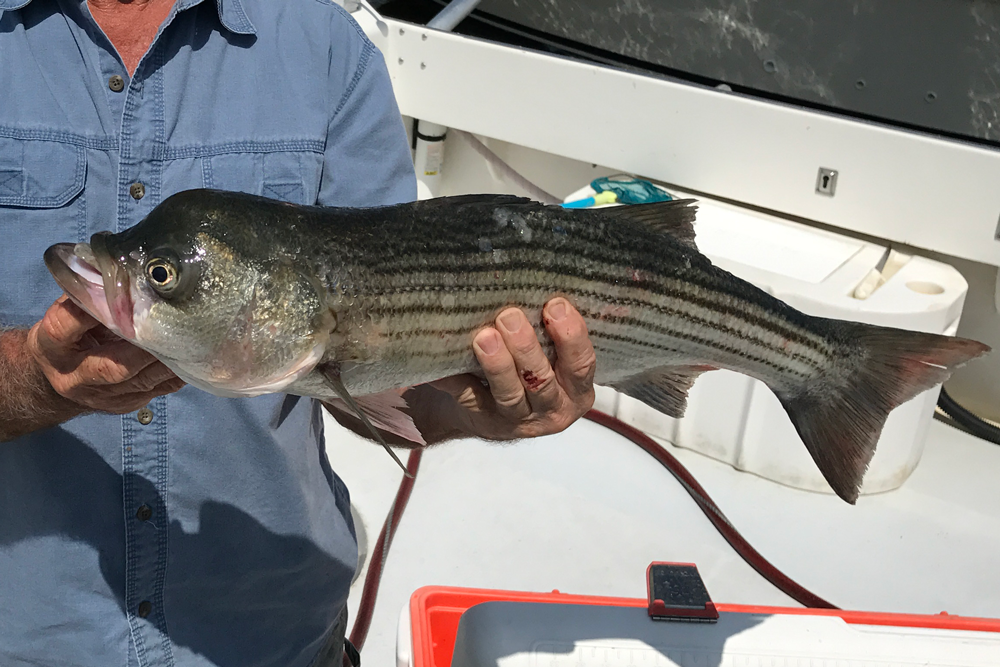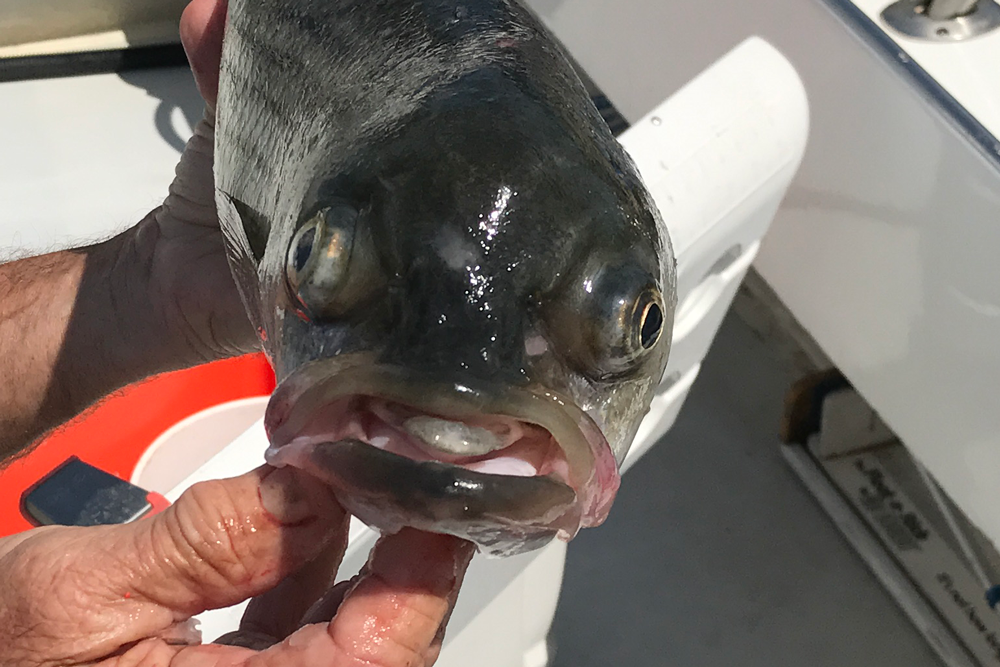Anglers fishing the Chesapeake Bay for stripers just north of the Severn recently hooked into this rather usual looking mutant rockfish.

Catching a mutant fish like this isn’t in and of itself all that unusual; anyone who’s fished for years on end has encountered a short fin here or a strangely-shaped tail there. Unlike the "inter-sex" largemouth bass found in the Potomac (blamed on endocrine-blocking chemicals), this particular oddity is not believed to be caused by anything crazy like spending too much time swimming around the CNPP or the old Allied Chemical plant site, but is considered to be a naturally-occurring mutation. Nor is this specific mutation unheard-of. Enough are seen, in fact, that stripers with this appearance have a nickname: pug-nosed striped bass. Way back in 1960 noted outdoors writer Bill Burton reported on pug-nosed stripers in the Baltimore Sun, when one was caught near Hart-Miller Island. The phenomenon isn’t specific to the Chesapeake Bay, either, as pug-nose stripers have also been documented in Long Island Sound. But as Burton reported at the time, “Growth in fish with this condition is reduced, as they may have difficulty passing water over the gills or seizing and holding prey.”
What’s so odd in this case is that the fish seems to have thrived even with a mutation this significant. Usually the pug-nose deformity isn’t as extreme as it was with this fish, particularly with its pronounced, forward-jutting lower jaw. Yet as you can see in the picture it looked relatively well-fed and healthy, and the angler reported that it struck hard and fought strongly when it ate the live spot.

After thoroughly documenting the catch with multiple cell phone snapshots, this pug-nose went right into the fishbox. Because despite its rather unusual-looking grill, the fish’s fillets were perfectly good for the grill.